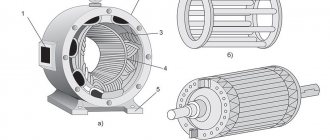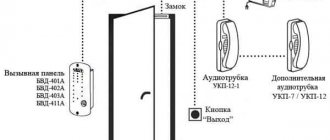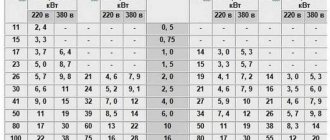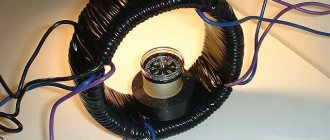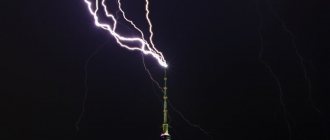The modern world cannot be imagined without such a phenomenon as electricity. It allows people to live with all the comforts in warm and bright houses and apartments, to set in motion various mechanisms and electrical units. Without electricity, the existence and functioning of such a global information space as the Internet is impossible.
Electricity is one of the foundations of scientific and technological progress
This article will be devoted to what this phenomenon is, what the concept of electricity consists of, who discovered it, where it is used and what effect it has on the human body.
What is electricity
Electricity is a series of phenomena associated with the movement and various types of interaction of charged bodies (electric charges). The term and definition of electricity were first introduced by the English physicist and naturalist William Gilbert in 1600 in his scientific work “On the Magnet, Magnetic Bodies and the Great Magnet - the Earth”.
On a note. If we explain in simple words what electricity is, then it primarily means electric current, as well as the repulsion of like and attraction of unlike poles of a magnet.
History of origin
Many years ago, people observed natural phenomena of an electrical nature. In 600 BC. In Greece, it was experimentally established that fossilized resin rubbed with wool attracts objects.
In the 30s In the 20th century, archaeologists found pots containing copper sheets. These peculiar lighting batteries were discovered in Baghdad, which suggests that the development belongs to the ancient Persians.
In 1600, the word electricus was used by William Gilbert to describe the static energy produced by the mechanical interaction of substances. Thomas Brown used the category “electricity” (“amber”) in a number of research works. From this time on, an era of experiments began in order to unravel the nature of the phenomenon. The date of each of them is written into history.
In the 17th century a generator was invented, insulators and conductors were classified, particles with “+” / “-” charges were differentiated. Since the 18th century and humanity still produces, generates and consumes electricity.
The period of early discoveries prepared the basis for the development of science, research, and the development of equipment for transporting electricity.
History of discovery
Diode Polarity
The history of studying this phenomenon goes back to the very distant past. So, the first to mention it was the ancient philosopher Thales of Miletus. It was he who, back in the 7th century BC, noticed that amber rubbed on a piece of wool began to attract objects of light weight. However, the development of research in this area stopped there for almost 2.5 millennia. Only in the 17th century was the term first introduced to denote the phenomenon discovered by the Greek philosopher (1600, W. Gilbert), then active research began to study the nature of electricity and the possibilities of its use for the benefit of humanity.
The most significant discoveries and inventions were the following:
- 1633 - German engineer Otto von Guericke invents the world's first electrostatic machine, which made it possible to observe various types of interaction of electric charges (repulsion and attraction);
- 1729 - the English scientist Stephen Gray, as a result of his research and experiments on the transmission of electricity over significant distances, discovered that different materials transmit it differently through their thickness (have different electrical conductivity);
- 1745 - Dutch scientist Pieter van Muschenbrouck invents the world's first electrical charge storage device (the simplest capacitor) - the Leyden jar.
- 1800 - Italian scientist Alessandro Volta invented the first current source - a galvanic cell consisting of round zinc and silver plates, folded alternately in a column and separated from each other by paper soaked in a saline solution.
- 1820 – Danish physicist Hans Oersted discovered the electromagnetic interaction between electric charges and charged particles of different signs.
- 1831 – Michael Faraday discovers the phenomenon of electromagnetic induction
- 1880 - Frenchman Pierre Curie discovers the effect of a crystal generating an electric charge when it is compressed or otherwise changed (piezoelectricity).
At the end of the 19th and 20th centuries, one of the most famous and mysterious scientists who studied what electricity is and created many inventions was Nikola Tesla.
Application of electricity
2. An electric vibrator cured all diseases
At the beginning of the 20th century, in 1913, people had unlimited faith in the incredible capabilities of electrical energy, including its healing properties. The device, which today can be purchased exclusively in stores for adults, was in those days advertised as a way to get rid of all diseases.
New device generates electricity from heat and light
It was recommended to apply the vibrator to absolutely any part of the body, be it the face, chest, head or leg.
The advertisement said that with the help of this device a person could easily
build muscle mass, get rid of headaches and other types of pain, sleep better, cure deafness, etc.
The advertisement also features testimonials from “influential and reputable doctors” talking about the wonderful drug. One of them emphasized that it was thanks to the presence of the vibrator in his ear that he was able to regain his hearing.
3. People passed an electric charge through themselves
In the 18th and 19th centuries, literally every person dreamed of learning for himself what electricity is. For example, in France there were huge queues of people wanting to try it for themselves.
the impact of a newly invented generator.
In a word, people behaved like children who were incredibly interested in what would happen if their fingers were in a socket.
Electricity's new relative
However, the first who wanted to try the charge on themselves were scientists. Scientific articles have mentioned side effects from contact with electricity, including seizures, nosebleeds, and severe headaches.
However, a real fanatic can hardly be intimidated by this
. For example, the famous scientist Johann Winkler, in the process of constant experiments, completely disfigured his body, and then took on the body of his wife.
And all in order to confirm your guesses. Later, everyone became interested in this; electric attractions appeared, which were special trailers that gave an electric charge to everyone who wanted to ride.
Nikola Tesla
Nikola Tesla
Resonance in an electrical circuit
Nikola Tesla is an outstanding scientist who made a huge contribution to the study of this phenomenon. Tesla owns more than 1,000 different inventions, about 800 of which he patented.
The most significant and important inventions of the great scientist are:
- High frequency generator;
- Induction asynchronous electric motor;
- High frequency transformer;
- Mast antenna for transmitting and receiving radio signals.
Tesla was also the first to develop and actively practice safety rules when working with electric current of various frequencies and strengths.
Natural electricity
Lightning
Soldering station for Arduino
Natural electricity is represented by the following phenomena:
- Atmospheric electricity (branching and ball lightning);
- Electrical impulses in the nervous system of living organisms;
- Electrical charges used by some species of stingrays and marine fish to protect themselves from danger and obtain food.
All these types of electricity are an integral part of nature - without them, the normal functioning of living organisms, balance in nature, and the existence of some species of animals are impossible.
Types of electricity in nature
The simplest example of electricity that occurs naturally is lightning. Water particles in clouds constantly collide with each other, acquiring a positive or negative charge. Lighter, positively charged particles end up at the top of the cloud, while heavier, negative particles move down. When two similar clouds are at a sufficiently close distance, but at different heights, the positive charges of one begin to be mutually attracted by the negative particles of the other. At this moment lightning occurs. This phenomenon also occurs between clouds and the earth's surface itself.
Another manifestation of electricity in nature is in special organs in fish, rays and eels. With their help, they can create electrical charges to defend themselves from predators or stun their victims. Their potential ranges from very weak discharges, invisible to humans, to deadly ones. Some fish create a weak electric field around themselves, which helps them search for prey and navigate in turbid water. Any physical object distorts it in one way or another, which helps to recreate the surrounding space and “see” without eyes.
Electricity also manifests itself in the functioning of the nervous system of living organisms. A nerve impulse transmits information from one cell to another, allowing you to respond to external and internal stimuli, think and control your movements.
Source
Application
The main manifestation of electricity is electric current. This phenomenon, which is the ordered movement of charged particles, is used:
- In everyday life - for lighting and heating homes, operating various equipment and tools;
- In industry - for lighting and heating of industrial and administrative buildings, operation of machines and various equipment;
- Transport – for powering power plants of railway transport, charging batteries of electric vehicles;
- In science - to conduct various experiments and experiments to study space and the secrets of nature.
Thus, electric current is the most important part of the modern world - without it the whole world will stop and very soon return to the stone age.
Unsolved Tesla Mysteries
Wardenclyffe Tower ("World System") - one of the most mysterious inventions of Nikola Tesla
After Tesla's death in 1943, the following few rather interesting, often mystical, unsolved mysteries of this great scientist remained:
- Tunguska explosion - many believe that it was the experiments of the great scientist to obtain and concentrate large charges of atmospheric electricity that could lead to the famous Tunguska explosion, the cause of which is currently still recognized as the fall of a meteorite;
- “World System” was the name of the tower built on Long Island, which allowed Tesla to illuminate the entire sky over New York, as well as most of the Atlantic, at night. The most interesting thing is that after this experiment the scientist left the tower and never returned to it. All drawings and design diagrams of this installation disappeared without a trace after the death of the scientist.
- The Lord of Lightning - the scientist, like a magician, managed to pass huge discharges of electricity through his body, without any harm to the body. For this, many journalists nicknamed Tesla “Lord of Lightning.” How the scientist managed this is still not known.
- Tesla electric car - some of Tesla's contemporaries claim that the scientist developed an electric car that worked on some unconventional power sources for that time. However, no evidence of the existence of such an electric car was subsequently obtained.
Important! In many of his experiments, Tesla relied on the existence of a special type of matter - ether. The scientist was sure that, thanks to the ether, it was possible to receive huge amounts of energy and transmit electrical signals over considerable distances.
The effect of electricity on living organisms
Electric current can affect both animals and humans to varying degrees.
The effect of electric current on the human body
As a rule, electric alternating current, the most common in everyday life, has a negative effect on the human body, the degree of which depends on the value of such a characteristic as current strength:
- With a current strength of 5 to 7 Amperes, cramps are observed in the arm muscles;
- Currents with a force of 8 to 25 Amps lead to pain and breathing problems;
- A current with a force of 50-80 Amps causes respiratory paralysis and disruption of the heart;
- A current with a force of over 80 Amps causes cardiac arrest and respiratory paralysis.
Low currents (up to 1.5 Amperes) lead to slight trembling of the fingers and do not cause pain.
Action of atmospheric electricity
The action of atmospheric electricity is a gigantic electrical discharge in the atmosphere. The current voltage reaches a million volts, the current strength is hundreds of thousands of amperes. The damaging factors of lightning are electric current, light and sound energy and shock wave. The duration of lightning exposure can be very short, limited to fractions of a second, but the extremely large amount of energy at the moment of its action causes various bodily injuries and even death. The action of lightning is, in principle, no different from the action of high voltage electric current. When struck by lightning, damage occurs on the skin, mainly in the form of burns, hair loss, and tree-like, branched red or pink shapes - the so-called lightning shapes. The appearance of “lightning figures” is explained by a sharp expansion of the superficial vessels of the skin and small hemorrhages along their course. In survivors, such changes can be observed for several days, and on the corpse they turn pale and disappear quite quickly. The effects of lightning are characterized by symmetry of the lesion - paresis of both limbs, paraplegia with deep prolonged loss of consciousness, respiratory arrest, depression of cardiac activity. Occasionally, skin lesions occur in the form of small holes with burnt edges (they can be mistaken for a gunshot entry hole), and sometimes severe damage up to extensive skin burns, bone fractures, separation of limbs and ruptures of internal organs. There are often cases of complete absence of visible traces of lightning on the human body. The pathomorphological picture of the internal organs when death occurs from the action of atmospheric electricity is similar to the picture observed in case of injury from technical electricity. When struck by lightning, clothing may rip in different directions or have small holes. The edges of the defects may be burned or remain completely unchanged. Typical features include holes in the soles of shoes, as well as charring of the skin around metal nails on the soles. Metal objects often melt completely or are melted, resulting in impregnation of the skin with metal, which is of expert diagnostic value. In the absence of signs of lightning damage, it is very difficult to resolve the issue of the cause of death. The participation of an expert in examining the place where the corpse was found is of great importance, since traces of lightning are often visible at the scene of the incident, for example in the form of splitting trees, fire, etc. Lightning damage can be direct or occur through any objects, for example through a radio or telephone . There are known cases of lightning strikes when talking on the phone during a thunderstorm, or when working with radios. Being struck by lightning does not always result in death. It may cause health problems or leave no consequences.
Interesting facts about electricity
- In order to extract electricity from a magnet from a speaker, two copper wires are wound around it, their two ends are soldered together, and a small light bulb or LED strip is connected to the remaining ones. In order to make a power source for a 220 V incandescent lamp, more powerful and larger magnets and thick copper wires of large cross-section are used.
- The oldest battery is considered to be a device found during excavations in Egypt, which is a copper vessel with an iron rod inserted into it that does not touch the walls.
- In order to show how electricity is generated and flows, at the court of King Louis XV they conducted an experiment with a Leyden jar and a formation of soldiers: the soldiers holding hands formed nothing less than the world's first full-fledged living electrical circuit;
- Due to the large number of deaths from lightning in Italy in the 18th century, a very strange fashion for hats and umbrellas with lightning rods appeared in many European countries;
- In Scandinavian countries, the main, and sometimes the only, source of electricity is hydroelectric power plants. Thanks to this, these countries have very low levels of air pollution.
Knowing how familiar electricity works is very important for every person, not only for the purpose of self-education and broadening one’s horizons, but also to ensure one’s own safety in a world where quite dangerous electricity is found at almost every step.
